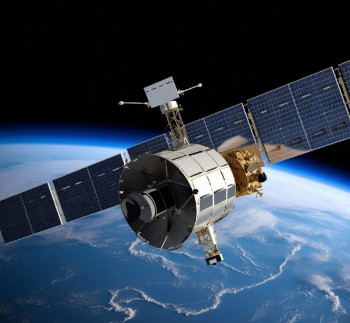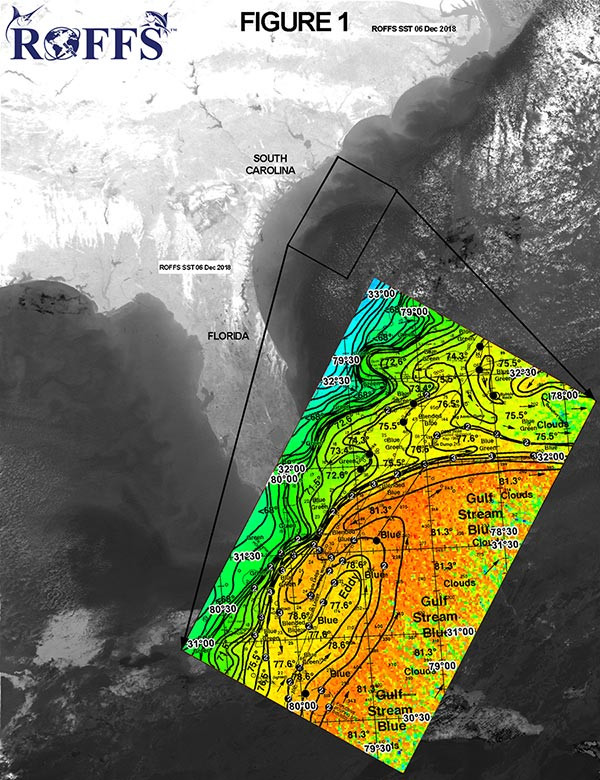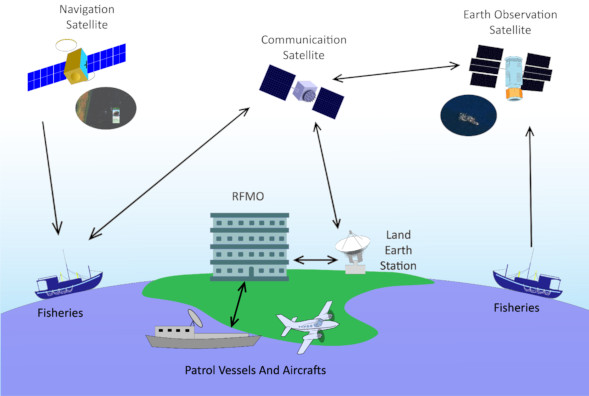|

Image: TS2 Space / FIS
The Role of Satellites in Monitoring Aquaculture and Fisheries for Sustainable Practices
 POLAND
POLAND
Monday, May 29, 2023, 01:00 (GMT + 9)
Satellites are playing an increasingly important role in monitoring aquaculture and fisheries for sustainable practices. With the ability to monitor the environment from space, satellites can provide a comprehensive overview of the health of aquatic ecosystems.
Satellites can be used to detect changes in water temperature, salinity, and oxygen levels. This data can be used to identify areas where aquaculture and fisheries are being over-exploited, allowing for more effective management of resources.

Source: KSAT
Satellites can also be used to detect changes in water quality, such as the presence of pollutants or algal blooms. This data can be used to identify areas where water quality is deteriorating, allowing for timely interventions to protect aquatic ecosystems.
Satellites can also be used to detect changes in land use, such as deforestation or coastal development. This data can be used to identify areas where aquaculture and fisheries are being threatened by human activities, allowing for more effective management of resources.
Finally, satellites can be used to detect changes in the abundance of fish species. This data can be used to identify areas where fish stocks are declining, allowing for more effective management of resources.

Overall, satellites are playing an increasingly important role in monitoring aquaculture and fisheries for sustainable practices. By providing a comprehensive overview of the health of aquatic ecosystems, satellites can help ensure that resources are managed responsibly and sustainably.
Exploring the Benefits of Satellites for Tracking Fish Migration and Stock Management
Source: NV5 Geospatial -->
Satellites are proving to be a valuable tool for tracking fish migration and stock management. With the help of satellites, scientists and fishery managers can now observe the movements of fish stocks in real-time, providing invaluable data for understanding the health of fish populations and their habitats.
Satellite-based tracking of fish stocks has several advantages over traditional methods of tracking. For one, it allows for the monitoring of large areas of ocean and coastal waters. This is especially useful for tracking migratory species, which may cover vast distances over the course of their lifetimes.
Satellite-based tracking also provides detailed information about the size and composition of fish stocks. This data can be used to inform decisions about fishing regulations, such as the setting of catch limits and the establishment of closed areas.
The use of satellites also allows for the monitoring of environmental conditions that may affect fish stocks. For example, satellite data can be used to track changes in ocean temperature, salinity, and currents, which can have a significant impact on the health of fish populations.

Source: Space Generation
Finally, satellite-based tracking can help to identify illegal fishing activities. By monitoring the movements of fishing vessels, authorities can detect suspicious activity and take action to protect fish stocks.
Overall, the use of satellites for tracking fish migration and stock management is proving to be a valuable tool for fishery managers. By providing detailed information about the size and composition of fish stocks, as well as environmental conditions, satellite-based tracking can help to ensure the sustainability of fish populations for generations to come.
How Satellites are Used to Support Sustainable Fisheries and Aquaculture

Spatial distribution of China's marine aquaculture and zoom views of imagery and prediction results for typical areas of (a), (b), (c), and (d). Source: ESSD Copernicus
Satellites are playing an increasingly important role in helping to support sustainable fisheries and aquaculture. By providing detailed information on ocean temperature, currents, and other environmental conditions, satellites can help fisheries and aquaculture operations better understand and manage their resources.
For example, satellite data can be used to track fish migration patterns, allowing fisheries to target specific areas and optimize their catch. This can help reduce the amount of bycatch and ensure that fishing operations are not over-harvesting any particular species.
Satellites can also be used to monitor ocean temperatures, which can have a significant impact on the growth and survival of fish. By tracking ocean temperatures, fisheries and aquaculture operations can better understand the environmental conditions that their fish are living in and make adjustments to their operations accordingly.

Location of the sampling points (a). Image examples of typical marine aquaculture areas on ground or from high-spatial-resolution (HSR) images. (b, e, g, h, i) Marine plant culture (MPC) areas from HSR images. (c, i) Marine animal culture (MAC) areas from HSR images. (d, k) Photos of MAC areas on ground. (f, j) Photos of MPC areas on ground. Source: ESSD Copernicus
In addition, satellites can be used to monitor the health of coral reefs, which are essential habitats for many species of fish. By tracking changes in the health of coral reefs, fisheries and aquaculture operations can better understand the impact of their operations on the environment and make changes to their practices to ensure that they are not causing any harm.
Finally, satellites can be used to support the development of aquaculture in developing countries. This includes monitoring the health of fish farms, identifying areas suitable for aquaculture, and providing information on the availability of resources such as water and feed.
Overall, satellites offer a wealth of potential for supporting sustainable fisheries and aquaculture in developing countries. With the right investments in technology and training, this potential can be realized and used to help ensure the long-term health of aquatic ecosystems and the livelihoods of those who depend on them.
Author: Marcin Frąckiewicz | TS2 Space
[email protected]
www.seafood.media
|



